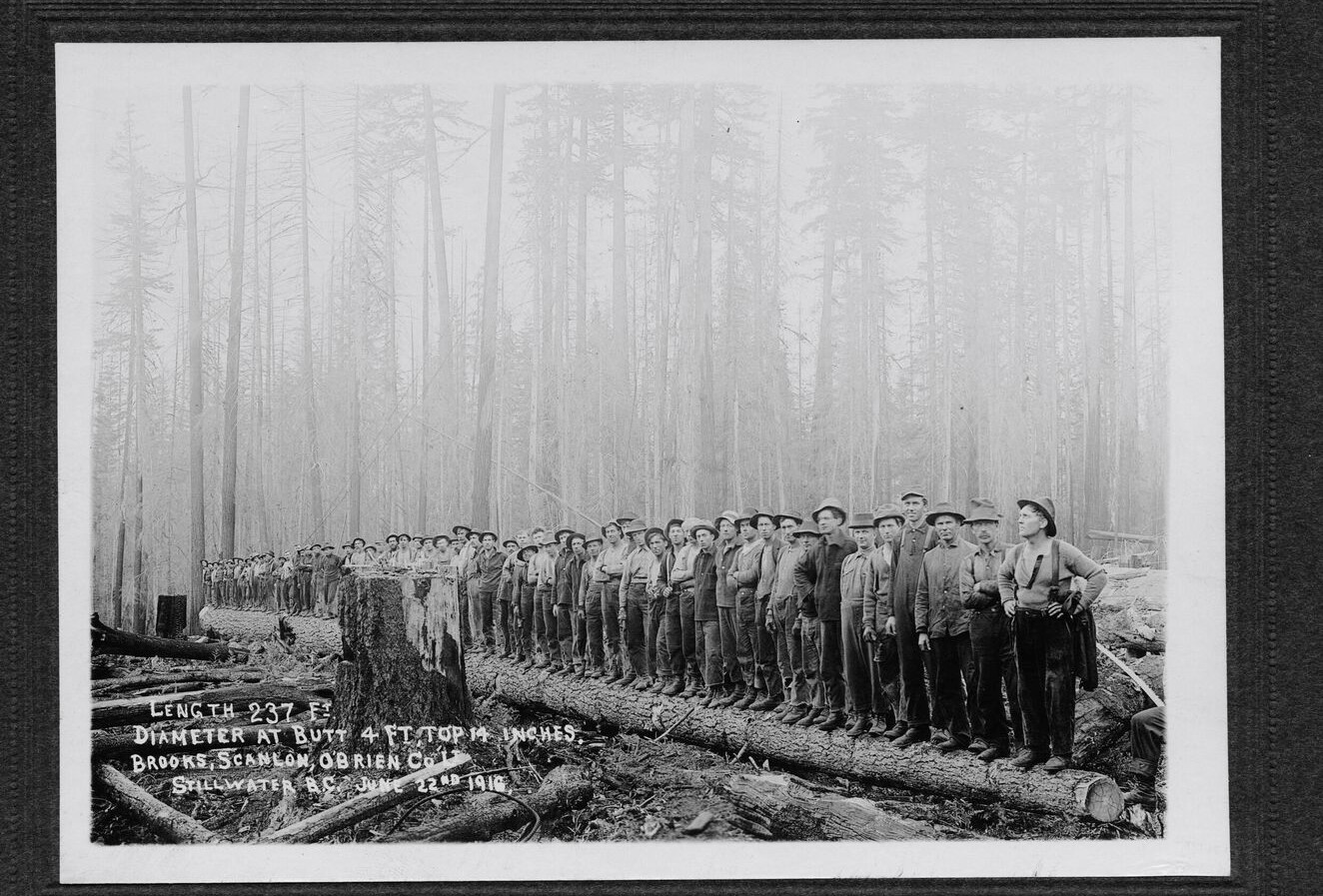The Royal Botanic Gardens, Kew, have had many giants to consider for today’s theme of Huge. For example, the Great Pagoda, built by Sir William Chambers, was the largest building (163ft) in a so-called ‘royal circuit’ of architectural structures across the Gardens. Kew’s tallest tree, a coastal redwood, measures 40 metres (131ft). For today, I will, however, be focussing on another giant, no longer present in the Gardens as such – the flagstaff.
‘Have you any use for a flagpole?’ – the initial offer

Kew has had three flagpoles in its 265-year long history, and all have been huge undertakings to source and erect. So, I have done a deep dive into our collections and what they can reveal about these endeavours. In 1859, a timber merchant working in British Columbia (in what is now called western Canada), Edward Stamp, wrote to the first Director of Kew, Sir William Hooker (1785-1865). He asked whether the Gardens would have any use for a flagpole.
The tree Stamp was offering is a Douglas pine, over 31 metres (100ft) tall. However, when it arrived, a gust of wind damaged the equipment hoisting it, causing the staff to snap. The replacement tree then came from Vancouver’s Island in British Columbia and was erected in 1861 by professional mast-riggers from Deptford Dockyard. It was about 250 years old when it was felled.

The second instalment – a six-year journey
After being touched up and preserved for decades, the first flagpole was finally declared as suffering from dry rot and being unsafe and was taken down in 1913. The Agent-General for British Columbia was quick to offer a replacement flagpole:
“As an old lover of Kew Gardens, it would be a great pleasure to me to be able to inform you that the people of British Columbia were determined to be well represented in that respect in your beautiful Gardens” (dated 8th January 1914) The New Flagstaff at Kew on JSTOR
This tree was also going to be a Douglas fir, a plant first introduced to England by David Douglas in 1827. Reports at the time in the Kew Bulletin go into great detail of the work that axemen and woodmen put in in order to find, fell, select, and shape the tree into a flagpole.

There was substantial concern about the issue of transporting it to Kew, as it weighed 18 tons and was 65 metres (214ft) long. With World War I having broken out in 1914, the transport didn’t commence until 1915, when the SS Merionethshire left Canada with the staff laid along the decks. Once docked in London, it was dropped into the Thames, where it was towed up the river by a tug and delivered to Kew.
After its arduous journey, it lay at Kew for a further three years during the war and it wasn’t until October 1919 that it was hoisted without any problems.

For some, this timing and the location of the flagpoles were symbolic, as they were located on the hill where once William Chambers’ Temple of Victory (another royal circuit structure) had stood, built in commemoration of the British victory at the Battle of Minden in 1759.
“Thus, in a sense, history is repeated, for the popular fancy is to regard the erection of the pole as a witness of the triumph of our Imperial arms over a foe greater and more sinister than that of 1759.” The New Flagstaff at Kew on JSTOR
An end to several eras
The third flagstaff arrived just in time for Kew’s bicentenary in 1959 and was presented by the British Columbia Loggers Association. At 68 metres (225ft) tall, it was at the time the tallest wooden flagpole in the world! Unfortunately, it failed its yearly safety inspection in 2006 and was subsequently taken down. The decision was made not to fell another ancient tree (the last flagstaff hat been approx. 300 years old) and instead a metal pole has been used since 2007 at the Victoria Gate entrance to the Gardens.
“But, standing there as it does, towering far above […] our native trees, we also accept it as a magnificent ‘exhibit’ for Kew, a testimony to the generosity and Imperial spirit of the Premier and Government of British Columbia…” The New Flagstaff at Kew on JSTOR
Kew Gardens’ Archive, Library, and Illustrations collections hold numerous sources on all flagpoles, including plans of the derrick used to lift the staff into position and even a sample of the wood! Visitors can still stand on the artificially created mount, once host to the Temple of Victory and the flagpoles, and now the site of the beautiful Winter Garden. The Economic Botany collection at Kew still has in their collections part of the base of the original flagstaff, showing 250 annual rings. In the Archives, a file still contains a tiny fragment of it today.

Further information
Written by Isabel Lauterjung, Assistant Archivist at Royal Botanic Gardens, Kew.
Special thanks to Kew Gardens’ Digital Engagement team for their support.
Our Archive catalogue is available here: Kew Archive Catalogue
Our Library catalogue is available here: Kew Enterprise
Please note that not all our Archive collections are catalogued, so if you cannot find something you are looking for online, please contact archives@kew.org with your enquiry.
Our Reading Room is open Tuesdays-Thursdays, 10am-4pm, for pre-booked appointments. Our current exhibition is free to visit during those times without a booking: Stories from the storm | Kew
